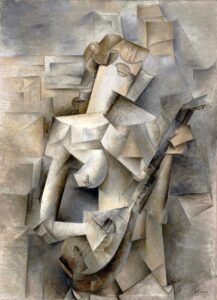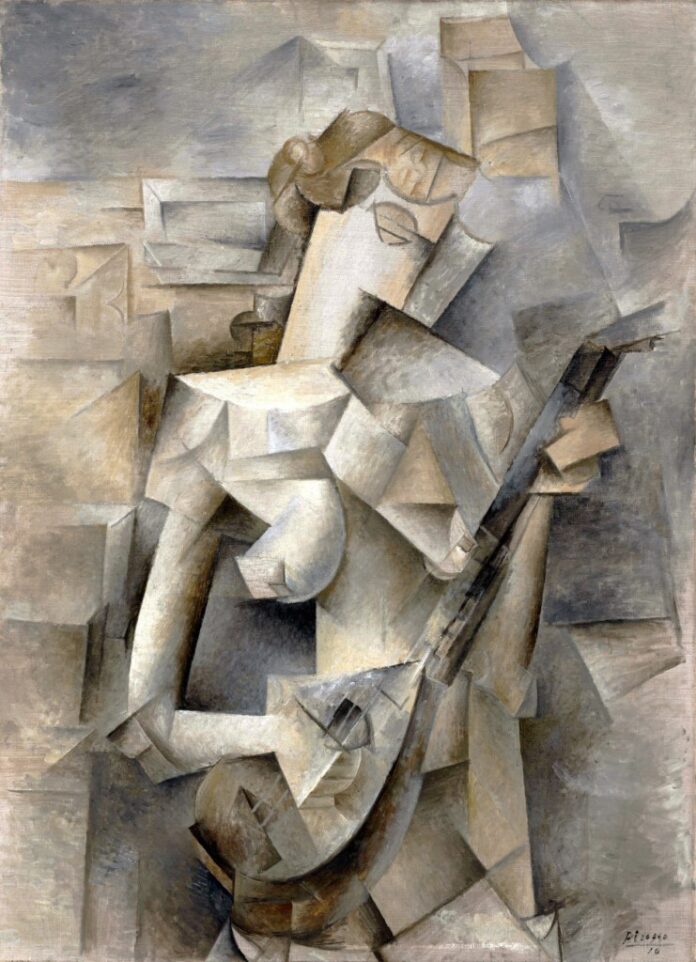
African arts today have come to be admired by art aficionados from all over the world, but it has not always been this way. There was a time when artworks from Africa was not considered worthy enough to be even displayed in European art museums.
The Europeans at the time with their myopic view of artefacts from the continent, and assessment clouded by their supremacist and racist standpoint never even considered these artworks as art.
Furthermore, the significance or purpose of the African art objects of which the Europeans were ignorant of, did not help the situation.
Today not only are these same works of art appreciated, admired and proudly displayed the world over, but African arts have also come to influence the works of some great artists and ushered in the era of modern arts. Modern arts would not have existed without African arts.
Most artworks from Africa are mostly but not limited to masks, paintings, textiles, and statues. Africans used different materials depending on their environment to produce these works, materials like wood, clay, shells, ivory, bronze, gold, copper, clay, feathers, bark and raffia.
Artistic creations from Africa have some religious or ceremonial purposes and often times they are expressed as a combination of realism with the supernatural or downright abstract artistic expressions.
Sometimes the works feature distorted elongated and exaggerated figures; sometimes the items are covered with bright dissonant colours resulting in a colour clash that is not necessarily complimentary or pleasing to the eye. Sometimes the surfaces are a repetition of geometric patterns.
THE RISE OF AFRICAN ARTS
The 19th century was rife with the colonization and invasion of the African continent by the European powers; they assumed control of most of the continent including its traditional items. European countries that took part in the Scramble for Africa collected numerous objects which they took back to Europe.
These African artistic objects were not considered art initially but rather symbols of Europe’s imperial power. By the 1870s, European museums had already started exhibiting these African artefacts, not as art creations but rather as ethnographic artefacts of a less civilized people; the art objects were neither appreciated for their aesthetic nor expressive qualities, and the Europeans never understood the meaning or significance of these works.
Towards the turn of the century in the early 1900s, several colonial art exhibitions took place in Europe especially in France and Germany including the Universal Exhibition in Paris which showcased some African statues and masks.
These occasions afforded the public a chance to view a wide variety of many different African artworks.
Initial public reaction was a combination of awe and horror at what they perceived to be savage, frightful and weird objects. Despite the mixed feelings, some open-minded and intellectually far-sighted artists many of whom were dissatisfied with the norm of European art began drawing inspiration from these African artworks.
Meanwhile, the interest of the public in these so-called primitive or tribal artworks greatly increased, this fact is reflected in the sudden appearance of many of such African artefacts in various art museums all across Europe in the early 19th century, and a sharp rise in the number of art galleries that showcased such works.
Around 1905 artists in Paris and Germany began to reflect some African characteristics in their works; this type of fusion is what gave rise to modern arts as we know it.
Expressionist art movements came into being, and the art world as we know it took on a new and different approach to date all as a result of Africa’s artistic creations.
THE INFLUENCE OF AFRICAN ARTS
During the first decade of the 20th century, Africa’s artistic influence shook the world of arts. Several expressionist art movements came into being. The German group Die Bruecke was founded in 1905 by artists like Kirchner, Heckel, Nolde, Schmidt-Rottluff, and Pechstein.
The group was noted for their bold use of clashing colours and distorted forms inspired by African arts. Radical young French painters like Matisse, Derain, Vlaminck, Rouault, and Dufy also followed suit. The term “Fauves” was used to describe their style.
CUBISM
Next, the term “Cubist” emerged in 1908 and was used to denote a series of paintings by Braque who was inspired by African arts, and later evolved to be applied as a label for a new style of art developed by Picasso and Braque, later joined by Gris and Léger. Cubism, in turn, influenced other artists like a German group “Der Blaue Reiter” founded in 1911 by Kandinsky, Marc, Campendonk, and Klee. Cubism also influenced the futurist school of Boccioni, Severini, and Carrá in France.
Both the Fauves and the Cubists came to know and greatly value African arts from their different points of view.
Within the space of a very short time, African artworks had already significantly started changing the world’s perception and creation of arts. Its influence on the art world was enormous.
It inspired revolutionary and new approaches to creating arts like Georges Braque and Pablo Picasso’s cubism which started between 1907 and 1908. And was derived from Africa’s unique artistic representation of different things into a single figure, which was a sharp departure from European academicism.
Both Picasso and Matisse collected African arts. Picasso had many African artworks in his private collections which inspired his creations. These artefacts mostly of sculptures and masks were obtained from countries like Nigeria, Mali, Gabon, Liberia, Congo and Coté d’ Ivoire. Matisse even travelled to Africa in pursuit of his artistic creations.
The fundamental principle of cubism entails the representation of different views of things, usually objects or figures together onto a single picture, this often results in paintings that appear fragmented and abstract.
It became one of the most influential painting styles of the twentieth century and began with Picasso’s celebrated painting the Demoiselles D’Avignon.
In the painting, Africa’s influence on the creation of Picasso is evident, not only is this expressed in the way the human forms and the surrounding spaces are fractured and distorted but also in the faces of the two figures depicted at the right of the canvas, their features adopt the angular features of African masks.
In cubism, the artist aims to show different viewpoints at the same time on the same space by breaking the objects and figures into distinct planes or areas and by so doing also suggest their three-dimensional form. By the representation of the objects, the two-dimensional flatness of the canvas is emphasized.
This heralded a revolutionary break from the European artistic norm of forming the illusion of real space from a fixed viewpoint which since the Renaissance had dominated European artistic representation.
The name cubism itself seems to have arisen from a comment by art critic Louis Vauxcelles, who and when commenting on some of Georges Braque’s paintings in a 1908 Paris exhibition described them as reducing everything to “geometric outlines, to cubes.”
Cubism opened up limitless possibilities on the representation of visual reality through arts and marked the starting point for the deluge of European abstract arts which hitherto was not widely practised, including later abstract art styles like constructivism and neo-plasticism.
Italian painter and sculptor Amendo Modigliani is another good example of the influence of African style of arts on Europeans and modern arts in general. His works clearly reflected the angular elongations and geometric patterning of African arts.
FAUVISM
African artworks did not only give rise to the creation of cubism. Artists like Henri Matisse and André Derain took to the abstract and bright dissonant colour representations of some African artwork and thus birthed fauvism.
Other European artists that were influenced by these artistic styles are Albert Marquet, Louis Valtat, Georges Braque, Maurice de Vlaminck, Charles Camoin, Kees Van Dongen, Jean Puy, Othon Friesz, Henri Manguin, Raoul Dufy, Georges Rouault, and Jean Metzinger.
Artists like these favoured bold colours and forms over realism.
The artistic creation of these artists illustrated a high degree of simplification and abstraction of the subject and was characterized by a seemingly wild brush work and strident colours.
EXPRESSIONISM
In Germany artists like Emil Nolde were to a vast extent influenced by African arts, especially pertaining to masks and sculptures even though they may be that they did not fully understand the meaning of African works or the intent of the anonymous creators of African art.
Their style of art, influenced by African artworks, seeks to express the world exclusively from the perspective of the subject, the artwork is radically distorted for impact and to evoke moods or ideas.
This type of art is known as expressionism; expressionist artists favour the expression of emotional experience over physical reality.
Other artists that employ this style of art are Fritz Bleyl, Conrad Felixmüller, George Grosz, Erich Heckel, Carl Hofer, Heinrich Campendonk, Käthe Kollwitz, Wilhelm Lehmbruck, August Macke, Franz Marc, Ludwig Meidner, Rolf Nesch, Otto Mueller, Gabriele Münter, Max Beckmann, and Karl Schmidt-Rottluff to name a few.
Expressionist art started in Germany around 1905 at the time when African arts were beginning to gain acceptance.

Natura Morta con Maschere III Mask From Dan Culture Africa
Expressionists basically do not create art based on realism. The artist seeks to depict the subjective emotions and responses within a person that are aroused by objects and events.
This expressionist style of art was started by the Germans grew and influenced the work of many other European and American artists like Marsden Hartley and Norris Embry. Even European sculptors like Ernst Barlach imbibed expressionism in his works.
A good example of Africa’s influence in Emil Nolde’s work is in the Natura Morta con Maschere III painting, the simplified geometric features, exaggerated expressions, and bold colours reflect the core artistic design of African masks.

